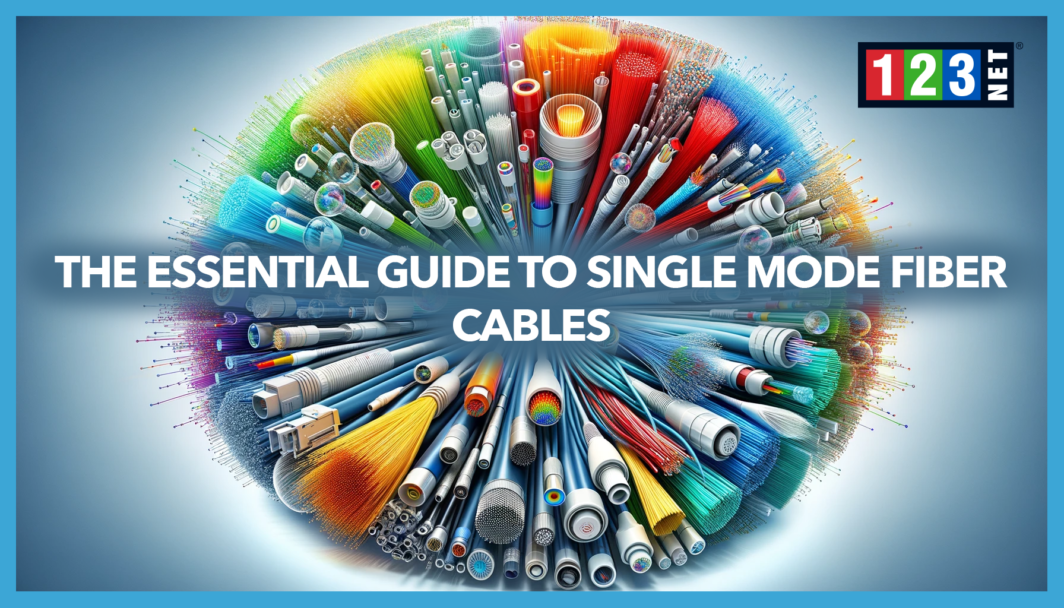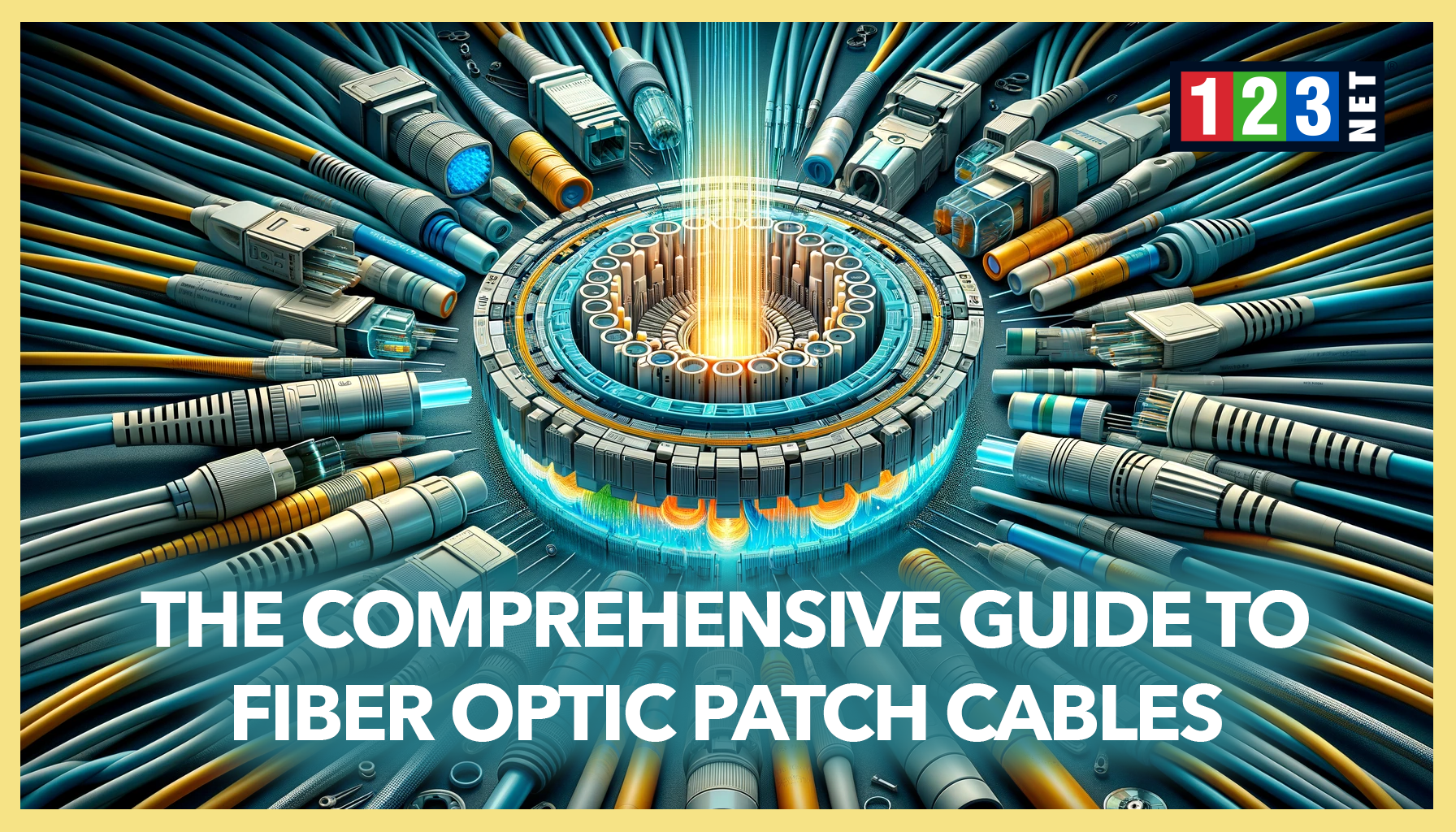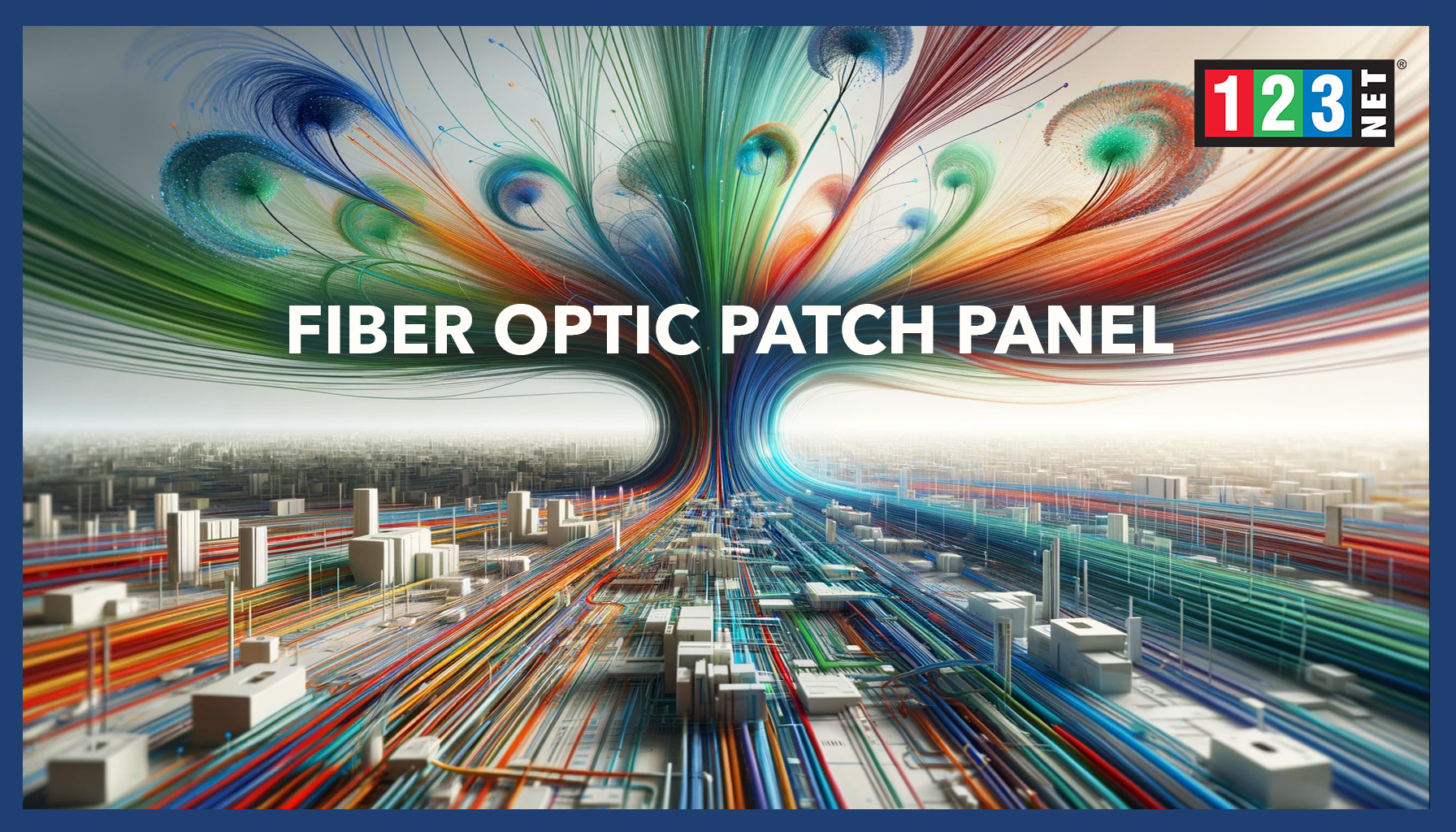
Introduction
In the realm of modern telecommunications, the backbone of high-speed data transmission lies in the use of optical fiber technology, particularly single mode fiber cables. These slender strands of glass or plastic are at the heart of the world’s communication networks. It is enabling the rapid flow of digital information over long distances. Single mode fiber cables, with their unique ability to carry light signals with minimal loss and dispersion, have become indispensable in an era where data is king. This article delves into the intricacies of single mode fiber cables, exploring their applications, advantages, and the future outlook of this pivotal technology in the telecommunications landscape.
Understanding Single Mode Fiber Cables
Single-mode fiber optic cables represent a specialized category of optical fibers engineered to transmit light signals over extensive distances with minimal signal degradation and dispersion. These fibers are distinguished from their multimode counterparts by their ability to limit light transmission to a solitary path, facilitated by a notably slender core diameter. This unique attribute permits single-mode fibers to support data transmission across several kilometers without substantial signal attenuation. It is positioning them as the preferred medium for a range of critical applications. This is including telecommunications, cable television, and high-speed internet connectivity.
At the heart of single-mode fiber cables lies a meticulously designed core enveloped by a cladding layer. This cladding functions as a reflective barrier, directing light back into the core to mitigate loss. As well as enable the light to traverse long distances efficiently. The operational efficacy of single-mode fibers is underpinned by foundational principles of optics. Such as light propagation and total internal reflection. These principles ensure that light signals are not only conveyed over significant distances but also maintained with exceptional fidelity. Consequently, single-mode fiber optics are integral to the infrastructure supporting modern digital communication. It is offering a reliable and efficient conduit for the high-speed transmission of data across the globe. Their ability to maintain signal integrity over long hauls makes them indispensable in the backbone of international internet infrastructure.
Key Applications of Single Mode Fiber Cables
Telecommunication and Networking
Single-mode fiber optic cables are indispensable across a wide array of sectors. Each benefiting from their capacity for high-speed, reliable data transmission over vast distances. In telecommunications and networking, these cables are foundational, serving as the very skeleton of global communications. They enable the seamless flow of data, voice, and video communications across continents. It is making international connectivity possible with minimal latency and signal loss.
Data Centers
Within the realm of data centers, single-mode fibers are crucial. They link these data hubs, allowing for the swift transfer of enormous volumes of data critical to cloud computing and the provision of various internet services. This rapid exchange is vital for the functioning of modern digital economies and the global internet infrastructure.
Community Antenna Television (CATV)
For Community Antenna Television (CATV) systems, single-mode fiber cables provide a superior solution for the delivery of cable television services. Their use ensures enhanced bandwidth and signal integrity across longer distances than traditional cable mediums, contributing to clearer, more reliable service delivery.
Factory Automation and Industrial Networking
In the industrial sector, particularly within factory automation and industrial networking, these cables play a key role. They underpin the communication between equipment and control systems, facilitating the automation processes that drive efficiency and productivity in manufacturing and processing industries.
Military and Defense Applications
Furthermore, single-mode fiber cables are of critical importance in military and defense applications. The military relies on these cables for secure, reliable communication networks. Their immunity to electromagnetic interference and eavesdropping makes them ideal for sensitive communications, ensuring that vital information is transmitted securely and without compromise.
Overall, single-mode fiber cables are a cornerstone technology across diverse fields, from telecommunications to defense, enabling the high-speed, secure, and efficient transmission of data that modern society relies upon. Their role in supporting the infrastructure of the digital age is both critical and expansive, underscoring their value in today’s technology-driven world.

Advantages of Single Mode Fiber Cables
Higher Bandwidth Capacity
Single mode fiber cables stand out in the realm of network cabling due to their distinct advantages over multimode fibers and other networking cables. One of their primary benefits is the significantly higher bandwidth capacity they offer, which enables them to support the increasingly high demands of modern high-capacity networks. This makes them ideally suited for applications requiring the transmission of large volumes of data at high speeds.
Longer Transmission Distances
Moreover, these cables excel in facilitating longer transmission distances with minimal signal loss or dispersion. Their unique design allows data to be transmitted over distances of up to 100 kilometers without necessitating signal amplification, a stark contrast to the limitations often encountered with multimode fibers and other types of network cabling. This feature is particularly beneficial for creating extensive network links that require reliable long-distance communication without frequent repeaters or boosters.
Lower Attenuation Rates
Additionally, the construction of single mode fibers inherently leads to lower attenuation rates. This means that the signal degradation over distance is considerably reduced, ensuring that data maintains its integrity as it travels. The reduced signal loss is a critical factor in maintaining the quality and reliability of data transmission over long distances, further underscoring the superiority of single mode fiber cables in various networking and telecommunications applications.
Types of Single Mode Fiber Cables
Quartz Optical Fiber Cables
Single mode fiber cables, essential for high-speed data transmission, come in various types tailored to specific needs and applications. Among these, Quartz Optical Fiber Cables are the most prevalent. Fabricated from silica, they are the backbone of the telecommunications and networking industries, celebrated for their high purity and minimal signal loss over long distances. This type of fiber cable is pivotal in enabling the global connectivity that defines our modern digital landscape. This is offering unparalleled reliability and efficiency in data transmission.
Multicomponent Glass Fiber Cables
Another significant category is the Multicomponent Glass Fiber Cables. These cables incorporate multiple types of glass, each selected for its unique optical properties to optimize performance for particular applications. By blending different glass materials, these fibers can achieve specific refractive indices, enhancing signal transmission qualities. As well as enabling more sophisticated and customized networking solutions. This versatility makes them suitable for a range of specialized telecommunications tasks, where tailored optical performance is crucial.
Plastic Optical Fiber Cables
Plastic Optical Fiber (POF) Cables represent a less conventional choice in the realm of single mode fibers. This is mainly due to their typical association with multimode applications. However, in certain contexts where flexibility and durability outweigh the need for the highest bandwidth or longest transmission distance, POF cables find their niche. Their robustness and bend tolerance make them ideal for environments where physical stresses on the cable are a concern. This is offering an alternative to glass fibers in specific industrial, automotive, and medical applications.
Specialized Fiber Cables
Lastly, the category of Specialized Fiber Cables includes fibers engineered for extreme conditions or highly specialized uses. This encompasses undersea cables designed to withstand harsh oceanic conditions, as well as fibers tailored for precision instruments in medical and scientific research. These specialized cables demonstrate the adaptability of single mode fiber technology. Extending its application beyond traditional telecommunications to support a wide array of critical and advanced technologies.
Installation and Maintenance
The installation and upkeep of single mode fiber cables demand meticulous attention and specialized knowledge. Given their critical role in facilitating high-speed, reliable data transmission. Key to the successful deployment of these cables is the practice of careful handling; their delicate nature makes them susceptible to damage, which can severely impact performance. Employing appropriate fiber optic connectors is essential, as they play a significant role in maintaining the integrity of the connection. Thus ensuring minimal signal loss and maximizing the efficiency of data transmission.
Maintaining these high-performance cables involves a regimen of regular inspections, thorough cleaning, and precise testing. This routine is vital for sustaining optimal functionality and extending the lifespan of the cables. It helps in preemptively identifying potential issues that could degrade performance over time.
Troubleshooting is an integral part of maintaining single mode fiber cable networks. With a primary focus on locating and rectifying any breaks or bends. Such physical imperfections in the cables can significantly obstruct light transmission, leading to data loss or signal degradation. Addressing these issues promptly is crucial to maintaining the high standards of performance expected. It is ensuring they continue to serve as the backbone of modern digital communications infrastructure.
Future Outlook and Market Trends
The global appetite for higher bandwidth and swifter internet speeds is fueling an upward trajectory in the demand for single mode fiber cables. This surge is not just a reflection of the current digital era’s requirements. Also an anticipation of future needs as the world delves deeper into connectivity. Innovations in fiber optic technology are at the heart of this trend, with ongoing research and development focused on discovering new materials and refining manufacturing processes. These advancements hold the promise of not only elevating the performance of single mode fiber cables but also making them more cost-effective.
As societies and economies become more intertwined through digital networks, the significance of single mode fiber cables in the telecommunications and networking landscape is increasingly pronounced. They are pivotal in enabling the high-speed, reliable data transmission that modern and future applications require. Whether it’s for streaming high-definition content, enabling cloud computing, or connecting IoT devices. Single mode fiber cables are set to remain indispensable. Their role in supporting and advancing global connectivity positions them as key components in shaping the trajectory of telecommunications infrastructure. Heralding a future where limitations on speed and bandwidth become relics of the past.
FAQs
- What makes single mode fiber cables suitable for long-distance transmission? A: Their design minimizes signal loss and dispersion, allowing for efficient light propagation over long distances.
- How do single mode and multimode fiber cables differ? A: Single mode fibers have a smaller core and carry light directly down the fiber, while multimode fibers have a larger core and support multiple light paths.
- Can single mode fiber cables be used for residential internet connections? A: Yes, they are often used in the backbone of internet infrastructure and can support high-speed residential connections.
- What are the main factors driving the growth of the single mode fiber cable market? A: The increasing demand for high-speed internet and telecommunications services, along with advances in fiber optic technology, are key drivers.
Conclusion
Single mode fiber cables are the lifelines of modern telecommunications. It is enabling the rapid and reliable transmission of data across vast distances. With their superior bandwidth, minimal signal loss, and versatility across various applications, these cables are set to remain at the forefront of digital communication. As technology advances and the world’s data needs continue to grow, the importance of single mode fiber cables in connecting us all has never been more evident.





